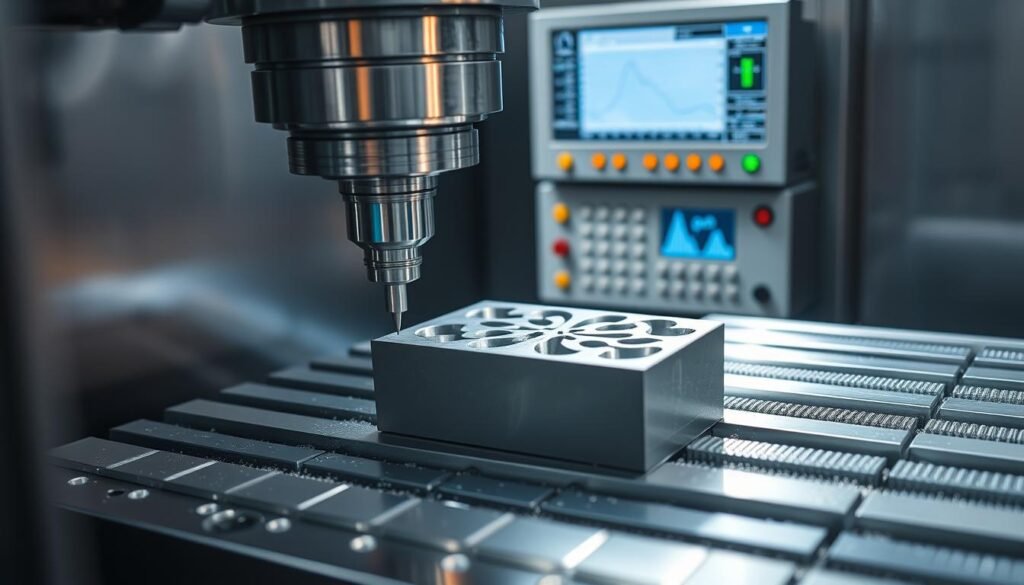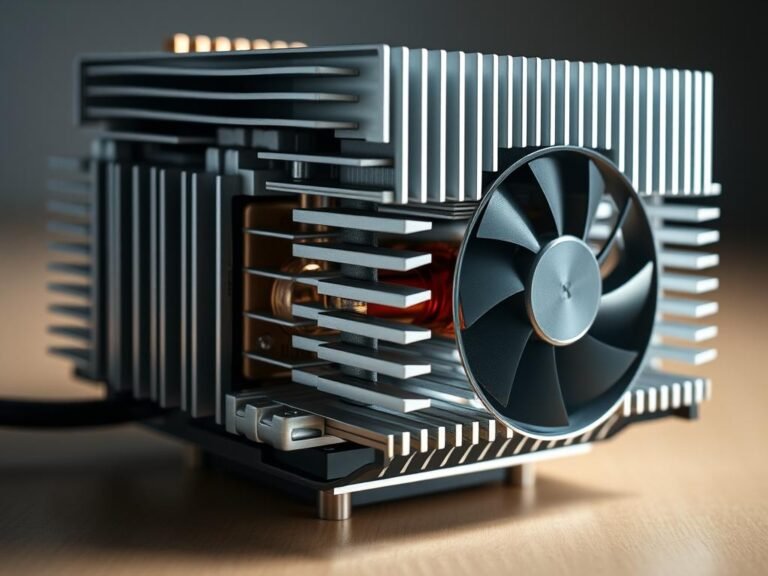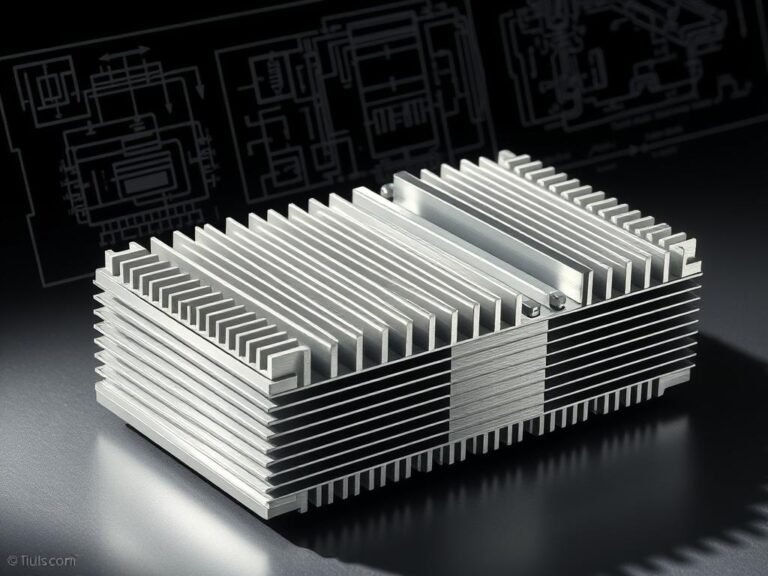The CNC milling machine represents a revolutionary technology in modern manufacturing. As a computer-controlled milling machine, it enables precise and efficient processing of various materials with the highest accuracy.
This innovative machine uses computer-controlled control systems to perform complex processing operations. It is used in various industries and revolutionizes the way technical components are manufactured.
The CNC milling machine differs fundamentally from traditional milling machines through its digital precision and flexibility. It can produce precise workpieces with minimal human intervention.
Definition of the CNC milling machine
CNC technology has fundamentally changed the modern manufacturing world. A CNC milling machine is a highly precise tool that performs complex machining processes through digital control. The term CNC stands for "Computer Numerical Control" and marks a turning point in industrial production.
The milling process is revolutionized by computer-controlled technology. Traditional manual methods are replaced by precise digital controls that enable unparalleled accuracy and efficiency.
- Highest precision in workpiece machining
- Complex geometric shapes can be manufactured precisely
- Minimal error rate through digital control
- Repeatable manufacturing results
The digital control allows engineers and technicians to program highly complex processing steps. Every movement and cut is pre-calculated and optimized on the computer.
"The CNC technology is the key to modern precision manufacturing." – Industry expert
Compared to traditional milling machines, the CNC milling machine offers significant advantages: faster production, less material waste, and consistently high quality of the manufactured components.
Computer-controlled operation in the CNC milling machine
The computer-controlled control system forms the core of modern CNC milling machines. An NC program precisely manages the machine control and enables highly automated manufacturing with exceptional accuracy.
The control unit interprets digital instructions and converts them into precise mechanical movements. Core components of this technology include:
- Central control computer
- Programmable Logic Controller
- Precise positioning systems
The NC program controls various machine parameters such as:
- Feed rate
- Tool change
- Processing angle
- Coolant supply
Automated manufacturing through CNC technology significantly reduces human error rates. Modern machine controls allow complex machining strategies with minimal manual intervention.
Precision and efficiency define computer-controlled manufacturing technology.
Software-controlled control systems also enable flexible adaptation to different production requirements, significantly increasing the efficiency of modern manufacturing processes.
Cutting machining by the CNC milling machine
The machining process of a CNC milling machine is a precise and complex material processing operation. The rotating tool selectively removes material layers and creates highly precise workpieces with exceptional accuracy.
The tool movement plays a crucial role in material processing. Modern CNC milling machines can operate on multiple axes simultaneously, enabling complex geometric shapes:
- High-precision material removal
- Multi-axis processing capabilities
- Minimal tolerances
In cutting technology, different machining strategies are distinguished:
- Plan millingGeneration of flat surfaces
- Profile milling: Processing of contours and edges
- Forehead millingMaterial layer removal
Material processing with CNC milling allows for extremely precise shaping of various workpieces made of metal, plastic, or wood.
Precision of the CNC milling machine
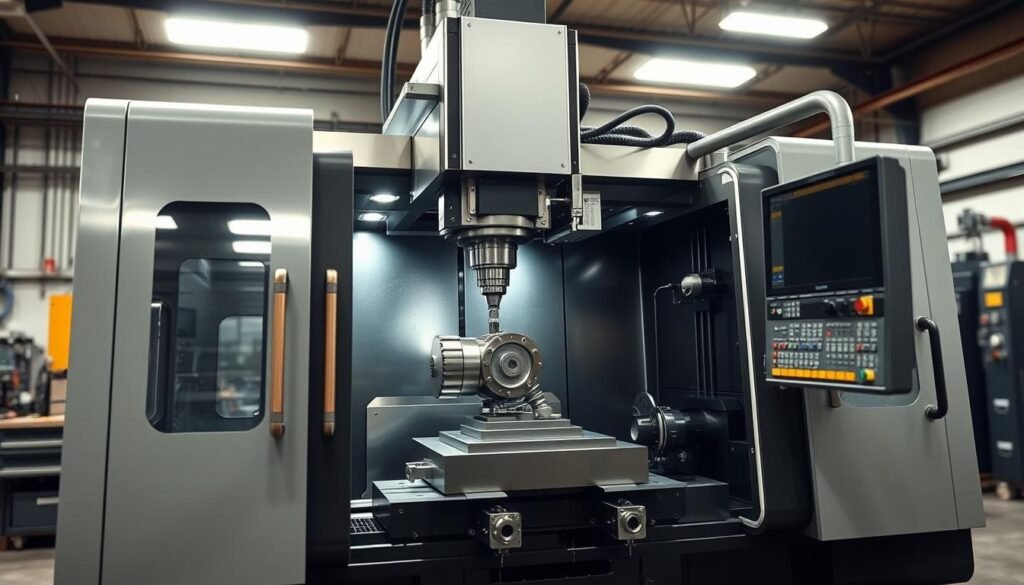
The CNC milling machine revolutionizes the modern manufacturing industry through its outstanding manufacturing accuracy. Computer-controlled technologies enable precise processing of workpieces with tolerances in the micrometer range that would not be achievable manually.
Core features of precision include:
- Extremely high repeatability of processing steps
- Constant quality control during the manufacturing process
- Minimal deviations between individual workpieces
The accuracy of a CNC milling machine is determined by various factors:
| Precision factor | Description |
|---|---|
| Machine construction | High-quality mechanical components |
| Control software | Precise numerical calculations |
| Tool quality | High-precision milling tools |
Industrial applications require absolute manufacturing precision. The CNC milling machine guarantees repeatability that far exceeds human manufacturing methodsThrough continuous quality control, error rates are minimized and production standards are ensured.
Versatility of the CNC milling machine
The CNC milling machine impresses with its exceptional material variety and manufacturing flexibility. It enables designers and engineers to precisely process a wide range of materials with the highest accuracy.
The strengths of this technology are especially evident when working with complex geometries. Various materials such as metals, plastics, and composites can be machined efficiently and precisely with a CNC milling machine.
- Processing of aluminum, steel, and titanium
- Precise manufacturing of plastic parts
- Processing of composite materials
The manufacturing flexibility of the CNC milling machine allows companies in the United States to quickly and cost-effectively produce custom components. Complex geometries, which were not possible with traditional manufacturing methods, can now be easily implemented.
The CNC milling machine revolutionizes modern manufacturing technology through its adaptability and precision.
Modern CNC milling machines offer designers almost unlimited design possibilities and enable highly flexible production of various components.
Applications of the CNC milling machine
The CNC technology application areas extend across various industrial applications that are revolutionizing the modern manufacturing industry. CNC milling plays a crucial role in producing precise components in different economic sectors.
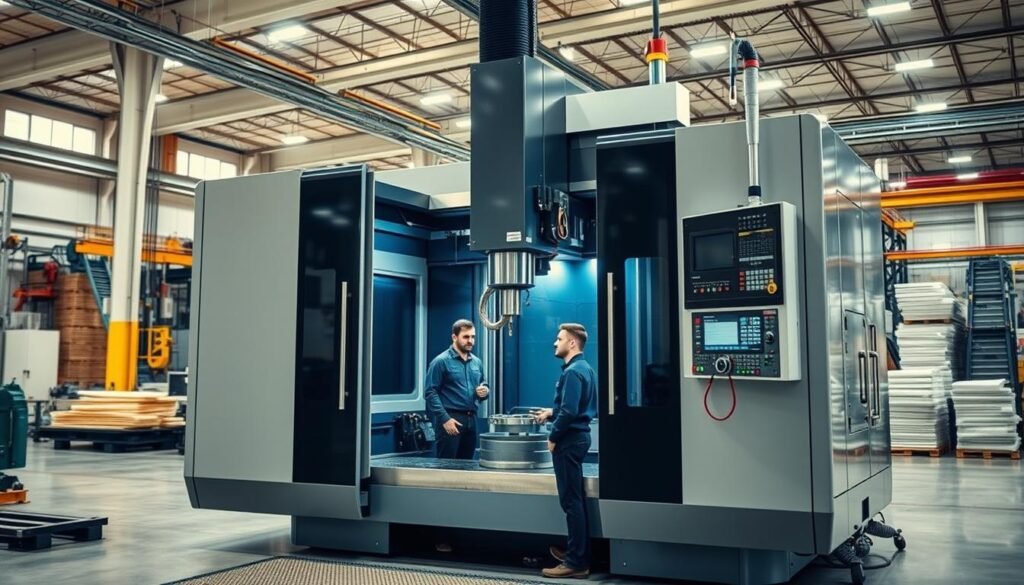
Mechanical engineering
In mechanical engineering, CNC milling enables the production of complex mechanical parts with the highest precision. Precision tools, machine components, and prototypes are efficiently manufactured through this technology.
- Manufacturing of precision parts
- Development of industrial machinery
- Rapid prototyping
Automobile industry
The manufacturing industry uses CNC milling for the production of engine components, body parts, and precision geometries. Automotive manufacturers benefit from the high reproducibility and quality of the machining.
| Scope of application | Typical components |
|---|---|
| Engine manufacturing | Cylinder head, piston, crankshaft |
| Body construction | Structural brackets, fastenings |
Aerospace engineering
In aerospace, highly complex components require absolute precision. CNC milling enables the machining of lightweight metals and special alloys for airplanes and spacecraft.
Medical technology
Medical technology uses CNC milling machines for the production of prosthetics, surgical instruments, and medical devices. The technology ensures the highest precision and sterility in component manufacturing.
- Orthopedic implants
- Surgical Instruments
- Medical precision components
How the CNC milling machine works
The CNC milling machine is a highly precise manufacturing tool that optimizes the entire machining process through computer-controlled technology. The machine operation follows a complex series of digital steps that enable exact and efficient production.
CAD model as a starting point
The first step in CNC control begins with creating a detailed 3D computer model. Designers use specialized CAD software to develop precise geometric shapes and specifications.
- Digital model creation
- Geometric precision planning
- Detailed technical drawings
Conversion in CAM software
After modeling, the CAD model is transferred to CAM software. This prepares the digital model for the actual machining process.
G-Code-Generierung
The CNC control now generates the specific G-code that precisely defines all movements and machining steps of the milling machine. This code contains precise instructions for tool movements, speeds, and cutting positions.
Loading and execution
The generated G-code is loaded into the CNC controller. Then, the machine begins the precise processing of the workpiece according to the programmed instructions.
| Processing step | Description |
|---|---|
| CAD-Modellierung | Digital construction of the workpiece |
| CAM-Konvertierung | Preparation for manufacturing process |
| G-Code-Generierung | Creation of precise editing instructions |
| CNC-Steuerung | Coordination of the processing procedure |
Summary of the CNC milling machine
The advantages of CNC technology are revolutionizing the modern manufacturing industry. CNC milling machines have established themselves as key technologies in industrial production and offer precise machining capabilities for complex workpieces made from various materials.
The future of manufacturing is significantly shaped by these highly automated systems. With their ability to enable complex geometric shapes and extremely precise machining, CNC milling plays a central role in industrial development. They greatly increase the productivity and quality of manufacturing processes.
Industry 4.0 is largely based on the digitization and networking of manufacturing technologies. CNC milling machines are an essential component that combines automation, precision, and flexibility. They enable fast and efficient production of components in industries such as mechanical engineering, automotive, and medical technology.
The technology is constantly evolving and will enable even smarter processing methods in the future. Companies that invest early in modern CNC milling technologies secure a decisive competitive advantage in the global manufacturing landscape.
